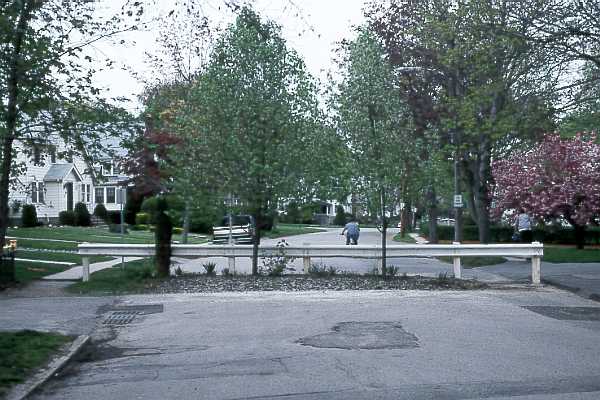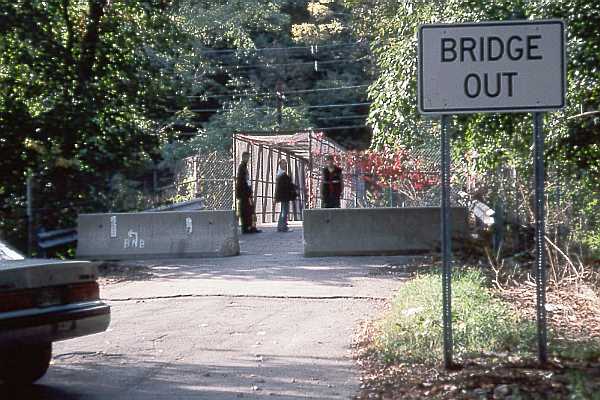
Top: Home Page
COMMENTS ON PROPOSED
|
Traffic-calming barrier in Belmont Center

Alternate concept of trailIf a trail on the McLean property is not to be considered as part of the through route, it should still be considered as a civic amenity, and it may have some transportation utility for local trips. I think that such a trail can be more successful if it is relieved of the burden of attempting to make it into a part of the Wayside Rail Trail system, because then it can be optimized to serve the goals of local access and recreation better, and to avoid some safety problems with the present proposal. I suggest that this trail not connect with Snake Hill Road. I was pleased that pedestrian and bicycle access was restored at the Clark Street Bridge after motor vehicle access was discontinued, but I have serious concerns about taking a bicycle trail across Pleasant Street at this location. My reasons |
The Clark Street Bridge

The lack of a trail leading to Snake Hill Road does mean that children could not use the trail system to get to Belmont Center. However, Waverly Square provides good shopping and access to public transportation. Frankly, I consider Waverly Square a more important destination for a path from the McLean residential and business developments than Beaver Brook Reservation. A direct path to Waverly Square would promote bicycle and pedestrian trips for shopping, as well as public transportation use. The entrance road to the McLean area, on Mill Street, already provides a reasonably direct route to the Reservation. The improved pleasant Street will provide a good connection into Belmont Center, except for child and novice bicyclists. A trail on the rail line from the train station across the Stone Bridge to Alexander Avenue would be a useful connection through Belmont Center, particularly for pedestrians wanting to get to the rail station. It might also connect to Concord Avenue near the police station. This would provide a good connection to Pleasant Street without the complications of the Clark Street Bridge/Royal Road/underpass route. Issues east of Belmont CenterA route on Channing Road would be attractive if the existing access from the cul de sac at its end to Brighton Ave. can be formalized. Channing Road carries very little traffic, thanks to the cul de sac. Or a route could go through the proposed underpass behind the High School. A route on Concord Avenue could use the High School entranceway, following its one-way travel pattern in both directions, or could use streets east of the High School, in either case coming out onto Brighton Avenue at Hittinger Road. Bicycle routes on sidewalksI notice that several sections of the proposed route are on sidewalks or on paths to be located next to the road like sidewalks. This type of routing is undesirable because intersections with streets and driveways create conflicts which it is difficult for bicyclists and motorists to avoid. In addition, the proposed sidewalk routing in Belmont includes several sharp right-angle turns at corners, which are substandard for bikeways and pose additional risks. Travel on such routes is slow, and they have been shown repeatedly to have a higher car-bike collision rate than riding in the street (see discussion of technical problems and research findings). Also, sidewalk routing places bicyclists in the wrong side of motor vehicle headlamp beams. The AASHTO bicycle facilities guide has a long list of additional reasons to avoid this type of routing. Turning and crossing collisions are common; overtaking collisions are rare. |